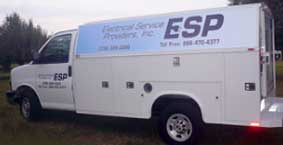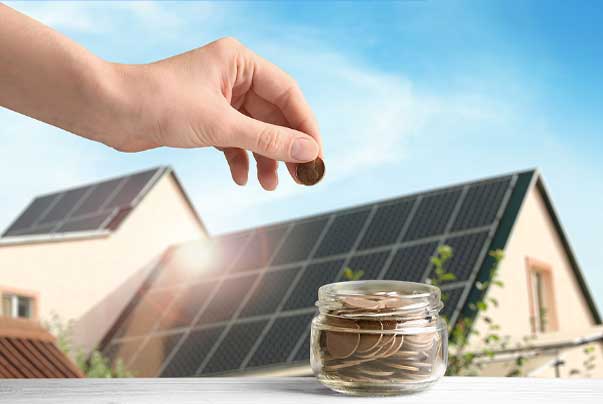#1: Unplug your Electronics
Even if they are turned off, all things that are plugged in draw energy. Every device that has a transformer (the black boxes at the end of power cords) draws energy, whether it’s in use or not. This energy is sometimes called “phantom.” It accounts for between 5-10% of an annual household’s energy consumption1. That’s a whole month’s worth!
To save electricity, you can plug them into a power strip instead of directly plugging them into the wall. You can choose from a variety of smart power strips that make this even more accessible. Some use motion sensors and timers, while others have an “always-on” socket that controls power to other devices.
#2: Clean your Air Filters
It is easy to overlook HVAC systems. However, changing your air filter regularly can improve efficiency. A dirty or clogged filter makes your HVAC system work harder and requires more fuel or electricity to maintain your home’s temperature. Your HVAC system accounts for approximately 50% of your energy usage2, and a dirty filter can cause your HVAC system to use 15% more energy.
Regularly changing your filter could save you as much as 7.5%! HVAC system air filters are usually between $10 and $20. Professionals recommend that they be changed at least once every three months. When you consider the energy savings, these filters can often be paid for themselves. A filter can save $7.50 per month on a $100 monthly energy bill. This adds up over three months to $22.50.
#3: Weatherproof Your House
Weather-strip your door and window frames to stop air leaks. This simple step can increase your home’s efficiency up to 20%. Caulking is the most popular method of weatherization. It’s cheap, easy to use, and everyone can do it. Acrylic latex caulk with added silicone is best. It costs slightly more but can last up to 10 years. It would help if you caulked the joints between the ceiling and ceiling, around bathroom vents, and soil stack penetrations.
Long strips of vinyl or foam weather-stripping can be used to fill cracks too large for caulk. Weather-stripping is usually available in rolls that can be easily pushed into place manually. Weather stripping is best done around the chimney, attic access panels, and sill plates close to the house foundation.
#4: Upgrade your Appliances
Although upgrading appliances can be expensive upfront, choosing more energy-efficient models will actually help you in the long term save money when you consider how much electricity it takes to run the appliance. Many local utilities offer rebates to help you purchase an eco-friendly certified appliance.
The energy consumption of eco-friendly appliances is lower than those of traditional appliances. On average, they use 20-50% less energy. A new refrigerator can help you save $270 per year over the next five years.
#5: Increase Laundry Efficiency
Washing laundry in larger loads with cold water will reduce energy consumption and water use. Older machines use up to 90% of their energy to heat water.6 This means that you can dramatically reduce your energy bills by simply changing the setting on your washer. Although many clothes tags call for warm water washing, they can be washed in cold water without damaging them. There are many cold-water laundry detergents available that make it easy to switch to cold water washing.
#6: Lower the Temperature
Although we all like to sleep warm, it is important to lower the temperature at night. This will allow you to save lots of energy. A cooler bedroom can help you sleep better. You could save as much as 10% by keeping your bedroom at a lower temperature than 70F (21C) at night.
#7: Buy a Smart Thermostat
Did you know that it’s insane to turn the heat on while you are away from your home? Many people have access to a thermostat that can be programmed to turn off certain temperatures at specific times. This allows them to save energy. The traditional thermostat can only do so many things. Installing a smart thermostat will let you save even more power without thinking about it. You have many models to choose from, each with its own unique features. Some can even learn your habits and adjust their settings accordingly.
#8: Swap your Bulbs
Replace any incandescent light bulb with a compact fluorescent (CFL) or light-emitting diode (LED) bulb. Although some incandescent bulbs use 25% less energy9 than others, this is still a small amount compared to the AAA savings you will see with CFL and LED bulbs. CFL bulbs can save energy for less than nine months and then start saving money. It uses about 30% less energy than an incandescent bulb and lasts up to 25x longer than an incandescent one.
#9: Set a timer to turn on your lights
All of us have been guilty of going to bed with the porch light on. You can put your exterior lights on a timer, so you don’t waste money. Some timers are able to adjust their schedule to accommodate changing sunset and sunrise times throughout the year. A timer can also be used to give the illusion of being home when you’re away for extended periods, even though it will consume energy.
#10: Install a low-flow showerhead
Install low-flow showerheads. This is a minor adjustment that you will soon get used to. For optimal energy savings, a standard showerhead consumes 2.5 gallons of water every minute. It is recommended that you use a showerhead that only uses 2 gallons per hour. A low-flow showerhead can save you up to 3.5% on your annual energy bill and 2,900 gallons per year.
RESOURCES
■ https://www.energy.gov/energysaver/articles/3-easy-tips-reduce-your-standby-power-loads
■ https://www.energystar.gov/campaign/heating_cooling
■ https://www.energy.gov/energysaver/maintaining-your-air-conditioner
■ https://greendeal.ca/powersmart-tips
■ https://www.energy.gov/energysaver/save-electricity-and-fuel/lighting-choices-save-you-money
■ https://www.energy.gov/energysaver/save-electricity-and-fuel/lighting-choices-save-you-money
■ https://www.energy.gov/energysaver/save-electricity-and-fuel/lighting-choices-save-you-money
■ https://www.eia.gov/tools/faqs/faq.php?id=97



